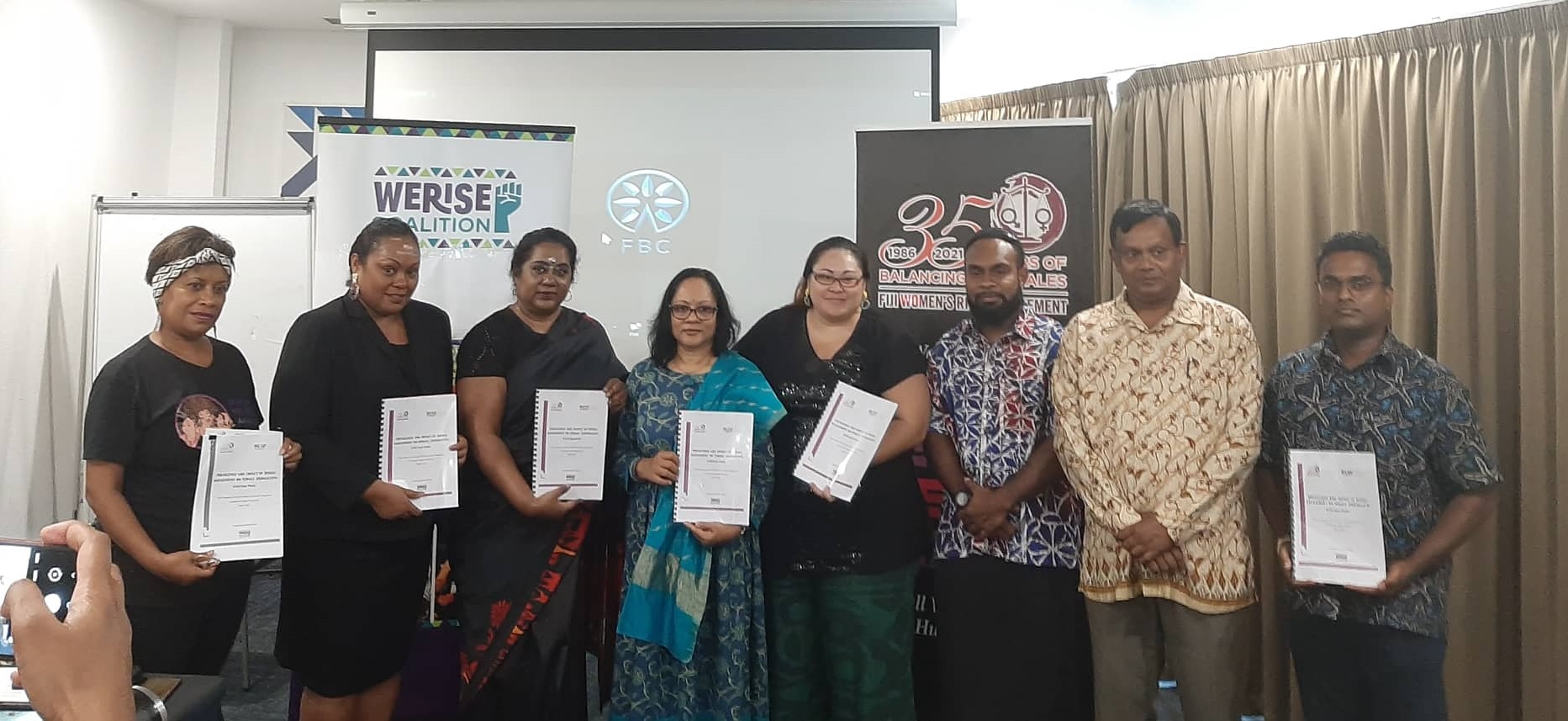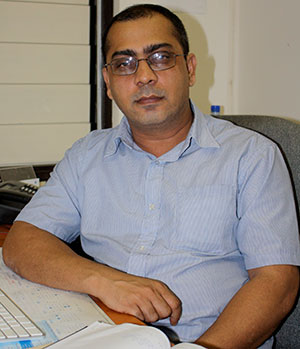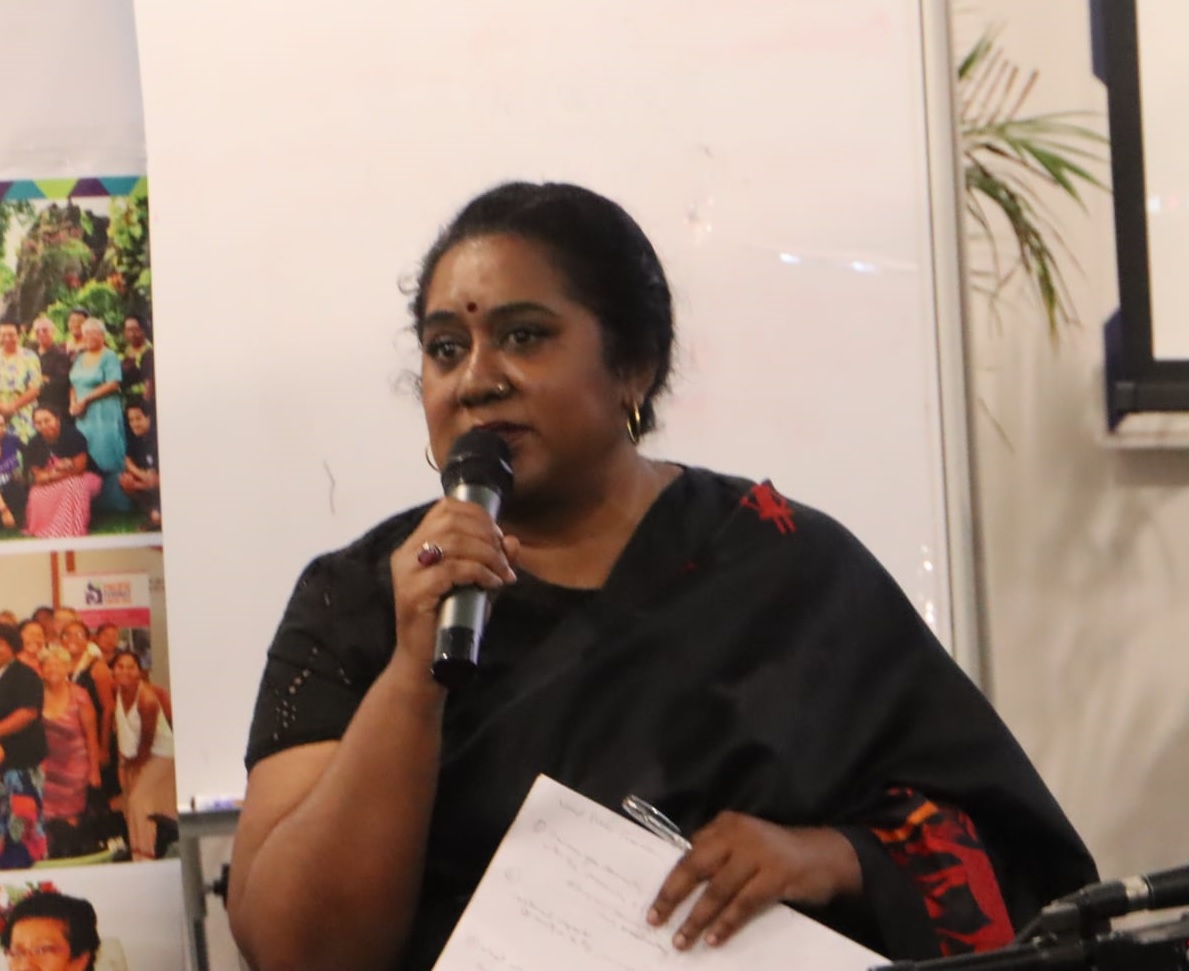Related News

From left: femLINKpacific executive director Susan Grey, senior journalist Lice Movono, FWRM executive director Nalini Singh, USP Centre for Flexible Learning director Dr Rajni Chand, co-lead researchers Geraldine Panapasa, Eliki Drugunalevu, USP Journalism consultant Dr Kalinga Seneviratne and USP lecturer in data science Dr Karuna Reddy with the FWRM-USP Journalism report on the ‘Prevalence and Impact of Sexual Harassment on Female Journalists: A Fiji Case Study’. The report was launched at the Tanoa Hotel in Suva today and coincided with the commemoration of World Press Freedom Day. Picture: FWRM
By ELIKI DRUGUNALEVU
A groundbreaking research on the prevalence and impact of sexual harassment on female journalists in Fiji, launched in Suva today by the Fiji Women’s Rights Movement in partnership with The University of the South Pacific Journalism Programme, revealed that more than 80 per cent of female journalists experienced workplace sexual harassment while eight in 10 women journalists experienced direct sexual remarks and jokes from fellow employees.
The study titled “Prevalence and Impact of Sexual Harassment on Female Journalists: A Fiji Case Study” was funded by the We Rise Coalition, and coincided with the commemoration of World Press Freedom Day.
Given the public interest role of journalism in any country, the report stated that the health and welfare of journalists was a national concern, especially vulnerable female journalists.

Project manager and research lead, Associate Professor Dr Shailendra Singh, said the study aimed to identify the problem, understand it, and make recommendations to address it.
“Females hold up half the sky in journalism in Fiji and the Pacific in that they constitute up to 50 per cent of the journalist workforce,” he said.
“Because we rely on them for news on which we make important decisions, and because we place such high expectations on them, we should be concerned about their wellbeing as well.
“Female journalists safety is a national concern, morally and for practical reasons because it impacts directly on their mental and physical health, and subsequently, on the quality of journalism,” said Dr Singh, who is currently the 2022 Australian National University’s Pacific Research Fellow.
The findings of this research report highlight the high prevalence and impact of sexual harassment in the Fiji news media sector, where up to half the journalist corps are women, many of whom are leading reporters and editors in the national scene.
According to Dr Singh, the overall aim of the research was to measure the prevalence rate of sexual harassment experienced by female journalists in Fiji, and provide holistic recommendations to address this issue.
FWRM executive director Nalini Singh said the issue of sexual harassment in the workplace was not a women’s rights issue only.
“It is on all of us to ensure that women are able to participate in the world of work, free from violence, harassment and any form of discrimination. We must do more to support women are speaking out, and even more so when gender-based violence against women is prevalent is in this country,” Ms Singh said.
The report documented the lived experiences of female journalists, majority of whom work in print, with the others choosing online and/or broadcasting. According to the women, the level of harassment at both the workplace and in the reporting field is high, with up to two-thirds reporting incidents.

According to the report, the harassment of female journalists in Fiji was predominantly verbal, but also very often gestural. Physical harassment is fairly common as well. Additionally, the women indicated that the types of sexual harassment is centered on women’s dress code, appearance, and as well as crude, sexual jokes.
This research is a follow-up on two groundbreaking FWRM studies in 2002 and 2016 into the incidence and nature of sexual harassment of women in the workplace in Fiji’s four major economic hubs in the country — Suva, Nadi, Lautoka and Labasa.
As it stands, many female journalists across the world continue to experience inequalities and harassment in the workplace, oftentimes with little to no action taken against the perpetrators. According to the International Labour Organisation (ILO), violence and harassment against women in the world of work impede women’s empowerment, and their active engagement and participation in the labour force.
Additionally, the report indicates the lack of awareness about sexual harassment and its impact on the victims is sustaining the problem. The lack of clarity about reporting mechanisms and redress is also a significant barrier and explain why some women choose not to report incidents. As this report argues, taking proactive steps by creating awareness is an important first step towards reducing the risks.
“Fiji needs stronger commitment from employers to adopt and implement sexual harassment policies in their workplaces that are consistent with the Employment Relations Act. Police and justice sectors must take action,” Ms Singh said.
“We are hopeful that the findings of this research as well as existing work done will inform key action and approaches to prevent sexual harassment in the workplace for women in the world of work.”
Other researchers include professor in journalism at The University of Vienna, Folker Hanusch, USP journalism teaching assistant Geraldine Panapasa and data science lecturer Dr Karuna Reddy.
To download the research, visit: http://www.fwrm.org.fj/publications/research-analysis